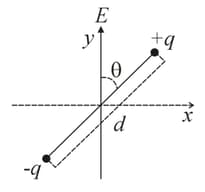A point lies on the perpendicular bisector of an electric dipole of dipole moment . If the distance of from the dipole is (much larger than the size of the dipole), then the electric intensity at is proportional to
Important Questions on Electrostatics
Determine the electric dipole moment of the system of three charges, placed on the vertices of an equilateral triangle, as shown in the figure:
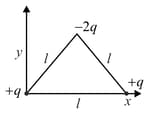
Two charges and are placed at points A and B separated by a distance of . Find the electric field at a point P on the perpendicular bisector of AB, at a distance of from its mid-point.
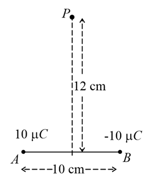
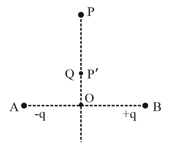
A dipole is placed in an electric field as shown. In which direction will it move?
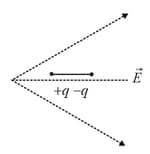
Two ideal electric dipoles and , having their dipole moment and respectively are placed on a plane with their centres at as shown in the figure. At point on the axis of dipole , the resultant electric field is making an angle of with the axis. The ratio of the dipole moment of and is take

In the figure the net torque acting on the dipole is
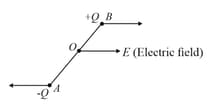
An electric dipole having point charges and , separated by a fixed distance is kept under the influence of a uniform electric field , such that the axis of the dipole is making an angle with the direction of , as shown in the figure. If the electric dipole is allowed to rotate in the -plane with its center being stationary, what is the magnitude of the net torque acting on the electric dipole?
